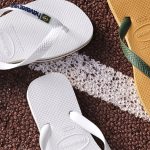More than 60% of the membership of the Sporting Goods Manufacturers Association (SGMA) predicts that 2010 will be a year of solid, single-digit growth for the sports, fitness, and recreation industry in the United States, according to SGMA's State of the Industry Report (2010 edition).
Sales in 2010 are expected to increase between 2% and 4.5%. The main
category 'drivers' in the industry will be athletic footwear and
consumer fitness equipment. The running shoe is the category leader for
athletic footwear while the treadmill is the most popular piece of
fitness equipment.
According to SGMA's State of the Industry Report (2010 edition), manufacturers' (wholesale) sales of sporting goods equipment, fitness equipment, sports apparel, athletic footwear, and licensed merchandise in the U.S. totaled $71.8 billion in 2009 — a 4.3% decrease over 2008 when wholesale sales were $75.0 billion.
“For the most part, the drop in sales for the sports products industry in 2009 was a reflection of the challenges which have affected the U.S. economy during the last 12-18 months,” said SGMA President Tom Cove. “As the U.S. economy shows improvement, consumers will be more inclined to increase their spending on fitness equipment, sports gear, athletic apparel, and athletic footwear. Generally speaking, sports participation in the U.S. remains strong and steady. We are seeing activities which promote family recreation and are less expensive to play attracting a significant number of participants.”
Changes at Work for 2010
This year, success for retailers and manufacturers in the sporting goods industry will be affected by a number of outside factors and influences:
Electronic Commerce: The Internet continues to be a more prominent source of income for both retailers selling to consumers and manufacturers selling directly to consumers. The Internet has more 'shelf space' than conventional brick-and-mortar retail outlets and can offer discounts such as no sales tax. And retailers are asking many vendors to bear the burden of delivery.
Sports Spending To Increase: In 2009, 25% of 'core' sports participants said they spent less on sports products and gear than they spent in 2008. By comparison, looking forward, in 2010, 23% of 'core' sports participants plan to increase their sports spending, nearly 20% said they plan to spend more on travel in order to compete and play more sports, and just over 13% plan to rejoin a health club.
Store Brands Sell Well: Retailers are aggressively marketing their private label items, which can put a strain on existing retailer-vendor relationships. In response, more vendors are selling directly to the general public.
Sources Must Deliver: The rising costs of wages, transportation, and raw materials create some concerns about supply chain management. As 'at once ordering' becomes more of an accepted business practice, this will put pressure on each company's supply chain management side of its business to be more efficient and economical.
'Uncle Sam's' Watchful Eye: Vendors of sporting goods are working to understand and comply with the Consumer Product Safety Improvement Act of 2008. The act dictates that all importers ensure their products comply with the safety standards of the Consumer Product Safety Commission. Violators are subject to product recalls and fines.
Throughout the year, the three biggest concerns for manufacturers will be (1) acquiring new technology, (2) retail credit availability, and (3) lack of consumer confidence. And, the three biggest concerns by manufacturers about the retail sector are (1) consumer demand for value pricing, (2) retailers reducing the number of vendor clients, and (3) the rise of 'at once' order fulfillment.
Activities for School Age Participants
According to SGMA Research, there is a strong correlation between students taking physical education classes in school and the likelihood of them getting involved in sports activities.
One of the more interesting findings of this report is the relationship between a physically active lifestyle and exposure to physical education classes while attending school. The findings show a strong connection between participating in PE and having an active lifestyle.
PE Pays Off: For today's children, they are more than three times likely to participate in team sports if they have PE classes in school than if they don't have PE in school.
The Roots of Activity Are PE: Among adults 21+, they are three times more likely to be 'super active' as adults if they had PE in school.
No PE Means Very Little Exercise: Among adults 21+, those who are inactive at school are three times more likely to be inactive as adults.
Fitness Pays Off: Active adults are nearly three times more likely to feel fit and nearly twice more likely to feel in good health.
Sports Participation
On the sports participation front, the trends are both revealing and newsworthy. Team sports are an integral part of the industry, but overall participation remains level.
Senior Surge: The fitness industry is looking for its growth to come from 'Baby Boomers' – those aged 45-63. This generation features 77 million people, is credited with 'inventing' the fitness movement, and is a prime target for health club memberships and home fitness equipment sales.
Fitness 'Groupies': Participation in socially based activities at health clubs is on the upswing. The featured activities include high impact aerobics (up 8.1%), low impact aerobics (up 6.3%), and step aerobics (up 4.5%).
Road Warriors: Nearly 44 million Americans are now jogging to stay fit – up 6.7% from 2008 – and just over 40 million Americans are keeping in shape by riding bikes – up 5.3% since 2008. The inexpensive nature of those two activities, the ease of access to both sports, and the lack of any club membership helps fuel interest in both activities.
Cool Court Sports: Since 2000, participation in tennis has risen by 43% while there's been a short-term participation surge in cardio tennis which has grown by just over 40% since 2008.
'Done in a Day' Deals: Outdoor activities, such as kayaking and day hiking, which can be done at a low cost relatively close to home, are gaining in popularity.
Team Trends: Since 2008, both ice hockey and lacrosse continue to grow in popularity while interest in most team sports remains stable, at best.















